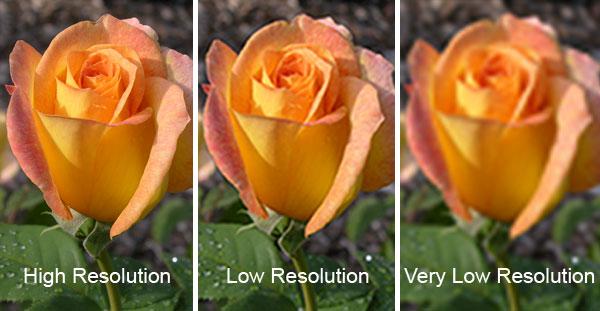Telling a story is much more than words

The Atlas Marketing team has learned a few things over the decades working to tell stories. This article is a compilation of several articles that we pulled together to merge the idea of telling a story into one, straightforward article.
Can I use a photo taken on my phone for the cover of our printed brochure?
Photography is such a useful support tool and has become a vital tool in telling a story. Keep in mind the adage, “a picture is worth a thousand words,” because, in today’s business world, visuals can do more to improve the bottom line than ever before.

Clients often ask if we are able to use photos taken on mobile phones for print brochures, folders, and more. While there are rare occasions these pictures will work, Atlas recommends you invest in professional photography. Printed, corporate materials, such as brochures or folders, are presentation pieces that represent you and your business. How they look will leave a lasting impression on the recipient. These images should support, emphasize, and/or underscore what is written, not detract or fall short on the intended impact. Additionally, smartphone images have limitations on size, resolution, and focus that could negatively affect your marketing material.
Image size does matter, but let’s begin with the basics. Photos are made of a grid of thousands of square pixels to form one larger image. A pixel is a single block of color. When photos are blown up, you can see the individual pixels. You may have seen the abbreviation “PPI” – it stands for pixels per inch, a measurement of the density of pixels in a square inch. The more pixels per inch, the higher the photo resolution/quality. In general, professionally printed materials need a much larger PPI as opposed to digital images.
Specific PPI densities are required for various printing methods. In order for printing ink dots to form a smooth surface on paper or other substrates, there is a need to include more pixels tightly packed together to ensure a smooth, visual color transition, typically 300 PPI. For printed items viewed from far away, like billboards, a lower PPI number can be used (usually around 100 PPI). Digital images are more forgiven, thus an even lower PPI number can be used (more like 72 PPI).
Here is the same image at three different resolutions.

How do you know if an image is good enough to print professionally? As stated above, 300 pixels in a square inch will produce a quality image. For example, to print an 8” x 10” image at 300 ppi multiply the printed image width and height in inches each by 300 pixels. The result is 2,400 x 3,000 pixels, which is the size image you need to print an 8 x 10 at 300 ppi. Another example: a 9 x 12 folder would need 2,700 x 3,600 at 300 ppi. What happens if the image is close in size? If you are within 10%, it should print fine.
To add, the terms hi-resolution and low-resolution are somewhat misleading. Photography resolution typically refers to the number of pixels that occupy a square inch. The more pixels, the more saturated the color in the box, the clearer the image will look. Hi-resolution typically assumes images are of good printing quality, while low-resolution is the opposite. However, you may have a low-resolution image that happens to be very large. In that case, the image could be “resampled” to adjust it to the correct pixel per inch size for printing use.
While newer mobile phones do offer better camera resolutions in larger formats, if images need to be blown up or cropped, then enlarged to fit a larger space, they will not be viable. And, even if an image is large enough, it may not be ideal for other reasons. When asked specifically about using mobile phone photos for printed materials consider the following:
- Is the image in focus? Often mobile phone cameras have limited capabilities when it comes to focusing on one area making images feel flat vs. dimensional.
- Are the lighting and color dynamic enough for the purposes of the piece? A designer could edit color, contrast, and more in photo editing software to enhance a mediocre image. Professionally shot images use lighting and other photography techniques to help build contrast and can intensify certain colors to enhance the image.
Whenever a photograph takes the visual lead, it represents your brand. To ensure that the photo looks great, consider investing in professional photography, including stock images. When in doubt, ask a professional designer for thoughts on the image. Often a stock image can be purchased for a nominal fee to support the messaging. If a specific photo is desired and a photoshoot is not possible, the designer can offer suggestions to use the image at the appropriate size.
When the client picks your least favorite design
Clients pay the bills — shouldn’t they get what they want? Yes! Clients should receive appropriate deliverables tied to the objectives identified at the project start. However, it is the designer’s job to offer design solutions and guide visual communication. Designers typically suggest multiple approaches to visually support a solution and it is only human nature for a favorite to rise to the top. While it is ideal for the favorite to be selected, at times, clients will select an alternative design or ask for something completely different. How a designer listens to the client and responds is a critical dance in partnership, especially when it comes to photography.
Subjectivity
Seasoned designers often learn to understand and appreciate subjectivity over time. All clients come to the table with personal experiences – feelings, opinions, and tastes. By offering varying design solutions, a designer is looking to not only connect to the objectives but also connect with the decision-maker.
Objectives
It is important for designers to actively listen to clients and understand their needs in order to provide varying photography options to meet the objectives. Reviewing objectives and other factors like target audience(s) with a client while looking at design options often helps to focus the conversation, allowing one or more design options to rise to the top.
Communication
Communicating why a particular design direction was chosen helps clients to understand a designer’s vision. Noting even subtle variances in photography options is important to showcase a thorough thought process which is often appreciated by clients, elevating the professional opinion of the designer.
Options
Designers should provide multiple creative solutions for clients to consider. They are hired to solve visual communications problems and should only deliver appropriate creative they would be honored to share. Therefore, if a client happens to pick a least favorite design, it is still an option the designer will be proud to publish. In our experience, we often have clients blend elements from various options into one final piece. This collaboration tends to lead to a strong outcome.
Poor Taste
Sometimes a client asks for something outside of the options provided and contradictory to the designer’s judgment (which is based on years of experience, yet still somewhat subjective). As a partner, designers should identify the issue for the change or suggestion, and note why, in their “professional design opinion”, a particular request may not offer the best solution. Additionally, a designer must be ready to explain what will work in reference to the suggestion, showing they are bridging their thoughts with the client’s ideas. Further discussion often leads to why an idea was requested and often assists in ultimately producing a strong visual option that will meet the campaign objectives and do so with the endorsement from both sides of the table.
The design is subjective and often can be emotionally charged by the client. As the design partner, we must always remember we are in a working relationship with a client and trust is built over time. It is our job to listen to the client, interpret their goals and objectives, and provide a visual interpretation everyone can embrace.
Grammar’s Part When Telling Your Story

Editing your own work can sometimes be quite a challenge. Everyone’s end game is to ensure what you write conveys your message effectively and tells your story. The last thing you want to have is that beautifully crafted piece discarded due to a grammatical error. To make every moment count and have your voice heard, we have compiled a few tips and tricks to help you avoid getting caught in a tangled web of spelling and grammatical errors.
Embrace spell check. It can be just that simple. For those who do a lot of writing outside programs like Word, there are apps like Grammarly that help catch errors. Spell check is a must and has improved to the point that the software includes a number of common grammar mistakes to help you further.
Reread. Before you send or share something with anyone, you should make it a habit to read the material. It is amazing how our minds work, but sometimes they are not always in sync with what we are trying to say. Reading what you’ve written before you hit send could make a considerable difference. While you are at it; print out the piece you plan to review. Not only does it make the writing sample tangible and easier to edit, it also allows you to see it in its finished form.
Give it time. Do your best to allow for time between the completed written material and the review. Time can bring clarity and sometimes even inspiration to improve your written piece.
Have someone else proofread your work. You know what you are trying to say, which can place you at a disadvantage to notice a content or punctuation mistake. Someone with a fresh set of eyes often has the ability to see things you don’t. This person can also provide valuable input or feedback to confirm that your point is understood.
Confirm the details are correct. Is there a phone number? Confirm by calling it. Is there an address? Confirm it’s correct. Is there a date? Make sure the day and the date match, and the year is accurate. Does the piece include URL links or email addresses? Check them to make sure they actually match at the right destination. Nothing kills a party faster than inviting everyone the day AFTER the event has occurred. These details also extend to tracking links. Part of a complete proof includes making sure all links contain the proper tracking information (if applicable) so measurement can be conducted.
Read Aloud. When you force yourself to read out loud, you slow down your reading and have the added bonus of hearing what is on the page. The latest version of Word includes a Read Aloud function allowing your device to read the piece for you. Close your eyes and just listen; after all, you want your readers to listen to you.
Proof titles, headlines, captions and contact information separately. We are often so focused on the main content, we tend to overlook the fine print and words in bold, especially when this content is incorporated into the design of a piece. Take a moment to review and confirm ALL content is accurate before considering the piece finished.
Part of successfully telling the story is to allow the story to shine. A story that contains grammatical errors has the propensity to lose the opportunity to connect and engage with our audience. These simple, but effective tips will improve your outcome and help you create a powerful story. Happy writing!
Whiteboards in a Mobile Society – the first social media platform

The whiteboard was my first social media. My whiteboard hung on the door to my college dorm room. To me, it was also the predecessor to text messaging. The whiteboard, along with the cafeteria and the student lounge, was where I learned of happenings on and off-campus. Yes, I grew up in a world before mobile phones, laptops, iPads, and social media. Since then, I’ve embraced technology and have learned a thing or two about how we, as humans, rely on these devices and apps to help us survive our day. Today, we live in a connected world; actually, a mobile-first, connected world. To succeed in this world as marketers, we need to think about our customers’ behaviors without forgetting the evolution of the whiteboard.
Communication is personal. When someone left me a message on my board, it was for me. They didn’t broadcast to everyone on the floor or in the dorm, it was specifically for me. In a mobile-first world, we have access to an outrageous amount of data that allows us to understand our customers and get personal with them. Customer segmentation can now be an experience that provides real value and can foster life-long, brand advocates. To succeed today, we must learn to use all the data at our fingertips.
Life is busy. Smartphones, tablets, Alexa, Google Home, etc., all these devices connect us in every aspect of our lives. One device (ok, maybe three as I look around my office) always seems to be within arm’s reach. These devices have become ingrained in our hectic day and have contributed to an on-demand world. Alexa, add bread to the shopping list. Siri, where’s the closest gas station? People do what they need to do and keep moving forward, without stopping. In a mobile society, consumers have the power to skip ads, screen calls, and leave sites when pop-ups occur. Marketers need to remember that interruptions, if not done with thought, can become just annoying interruptions. It is our responsibility to add value and enhance an experience, without disrupting the movement. We need to be along for the ride, not the reason for the derailment.
Turn an engagement into an experience. My whiteboard helped me find my friends and know what was going on when and where. It helped me find moments to engage and join in on the collegiate experience. To stay ahead in a mobile-first world, marketers must look at customer interactions as experiences. What are we doing to make life easier, better, less taxing, or more family-friendly for our customers? The more we connect and engage with our customers, the better the opportunity for an engagement to become an experience. Great experiences create brand advocates and loyalists. To do this, marketers must listen to clients, identify ways to connect with audiences that prompt engagement and fosters an experience.

Life continues, and the pace is fast. Whiteboards on dorm room doors are no longer the lifeline they used to be. Mobile devices have replaced that link, but there is always something coming. What’s next? Wearables with projected screens? Who knows what tomorrow will bring, but if we are to survive and be successful, it is up to us to continue to keep a pulse on what’s new and balance that with what our customers want and need. It is up to us, as marketers, to use the tools available to create the customer experience everyone expects.
Creatively Conquering Content: How Visuals Can Win New Business
A driving force in business today is the creation of an attention-grabbing proposal or presentation. However, while it sounds like a simple solution, it’s no small thing. When a Request for Proposal (RFP) comes in the door, companies must invest time and money to prepare, produce and track responses. If a dedicated marketing person isn’t in place, it can seem overwhelming to put together a detailed response, but it doesn’t have to be. Just like RFPs, new business presentations often come with little time to prepare. Both types of communications have two levels of significance: 1) what you say, and 2) how you say it.
Obviously, content is the foundation for telling your story and an important (but often overlooked) element is how you visually represent yourself. The following are some considerations for creating materials that visually impact customers and prospects, and raise awareness for companies in the early stages of the new business process.
Thinking Beyond The Binder
Typically, responses to RFPs are produced using a traditional method: a three-ring binder full of information adhering to the philosophy that ‘more is better.’ That method makes sense because often there are specifications that must be met and it is relatively easy to print information. Does it get the job done? Absolutely. Does it make people remember you? Probably not. When was the last time a three-ring binder caused you to stop what you were doing and devote all of your attention to it? The physical container presents the perfect opportunity for using imagination to catapult the response to the next level. It could be as simple as including a pop of color, images that highlight your concept/idea or really going the distance with something like Google Cardboard to build an immersive experience your prospect will never forget. The idea is to think creatively and draw the customer into the experience so they can see themselves working with you.
Packaging is Everything
If there is flexibility in how a response can be packaged, there are a number of opportunities to customize for differentiation and still meet any required specifications. Consider a high-quality box with a colorful design or incorporate a different binding method. For example, instead of the previously mentioned three-ring binder, consider investing in a spiral binding apparatus or if time allows, saddle stitching, velo binding or perfect binding can also be used to make your response stand out. Custom pieces can also be created in-house via 3-D printing to reduce cost and time expenditures. The key is to examine what elements are required by the creator of the RFP and rework the packaging to elevate the response above the others. You want to make people excited to open the package and experience the content created to tell your story.
Evolve Your Thinking
Technology provides opportunities to present your content for consumption. From video cameras and drones, technology is constantly advancing and the time is right to take the steps to allow your company to distinguish itself. Some methods for winning business include using tools such as:
- Video testimonials and case studies to highlight satisfied customers and successful projects
- Maya®(3D animation, modeling, simulation and rendering software) to help customers visualize how a concept will be perceived
- Photography (stock or customize) can help solidify an experience or provide visual support
- Prezi to step outside the linear structure of a traditional presentation
Without a doubt, responding to an RFP or presenting your company in a new business meeting is a critical step in winning business. As such, it is essential that your company represent itself accurately and positively. While RFP responses and presentations are not traditional marketing pieces, both tell your company’s story and must be visually compelling. RFPs and new business opportunities can arrive at inopportune times, so being prepared in advance will help lighten the load and help everyone stay focused to win the business.
